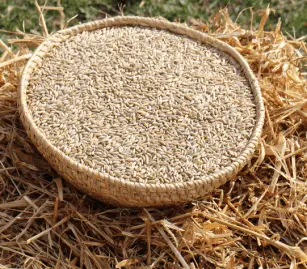
Gluten allergy is very common nowadays. Up to 20% of people with food allergies are allergic to gluten. So, how do you recognize an allergy to this ingredient in yourself or your family members?
In children, gluten allergy most often manifests itself as atopic dermatitis, much less often you can meet with the symptoms of this allergy occurring on the part of the digestive or respiratory system, and they manifest themselves even after eating small amounts of it. Most children grow out of this allergy. In adults, however, gluten allergy occurs in the form of swelling, diarrhea, and rashes, the so-called. hives or anaphylactic shock. The difference between the occurrence of this allergy in children and adults is that adults suffer from this condition and cannot grow out of it, but in order for the symptoms to occur, they need to absorb really large amounts of gluten.
The first symptoms of allergy appear within a few minutes to an hour after eating gluten, and their type depends on the type of antibodies. These may be one or more of the following symptoms: vomiting, diarrhoea, anaphylactic shock, urticaria, runny nose, bronchospasm, atopic dermatitis-type skin lesions.
So the question comes to mind how to deal with this intolerance. Maybe it’s worth thinking about eliminating gluten from your diet, it will certainly prove to be much more effective than taking pills for already existing symptoms.
Therefore, it is important to remember what foods are gluten-free and base your basic diet on them. It does not have to be difficult, and if it is not a problem for you, it is also worth going to a dietitian who will develop a nutritious and wholesome diet for the whole family on this basis.
Products that do NOT contain gluten:
Cereals naturally gluten-free, such as white and brown rice, corn, buckwheat, millet, amaranth, quinoa, flours and groats made from naturally gluten-free cereals (e.g. millet, millet, buckwheat), rice flakes, corn, rice and tapioca starch, ready-made gluten-free flour mixes, bread and pasta made of gluten-free flours, self-made and purchased marked with the “crossed ear of corn” sign, rice and corn porridges for children, corn crisps, popcorn, gluten-free oats (with reservations), gluten-free breadcrumbs, fresh, unprocessed meat, fish , eggs, fresh milk, milk in cartons, condensed milk, powdered milk, kefir, buttermilk, natural yoghurt, unprocessed cottage cheese, yellow cheese, butter, lard, margarine, vegetable oil, olive oil, All vegetables (fresh, frozen, canned without additives), legumes (peas, beans, lentils), potatoes, potato starch, All fruits (fresh, frozen, canned), sugar, jam, honey, landr cereals, cakes and biscuits made from permitted products, jellies and home-made puddings made of potato flour, cakes and biscuits marked with the sign of “crossed ear of ear”, tea, natural coffee, fruit juices, mineral waters, compotes, herbal infusions, pure alcohols, Salt, pepper, herbs, homogeneous spices, vinegar, apple cider vinegar, Tamari gluten-free soy sauce, homemade soups made from permitted products, gluten-free baking powder, cooking soda, low-gluten ingredients.









